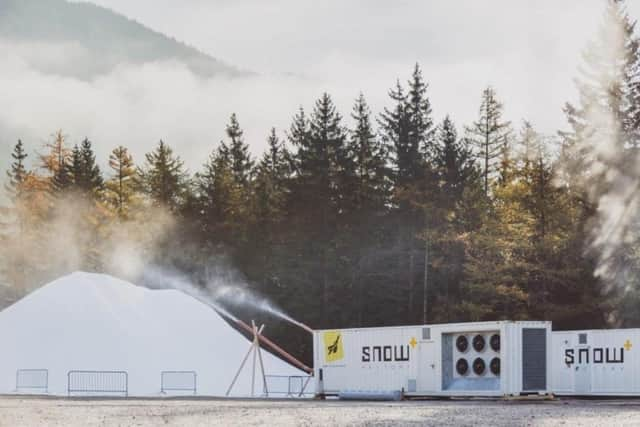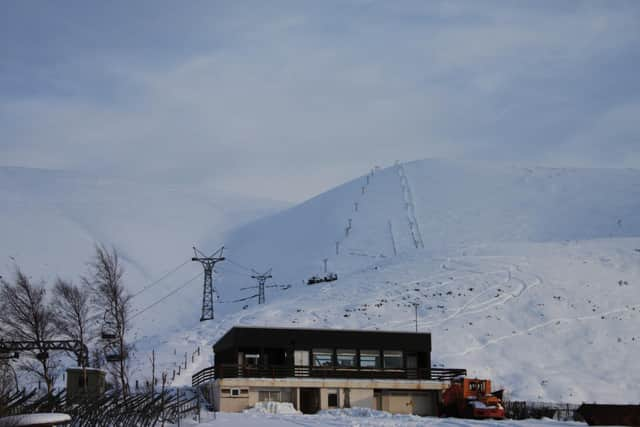Skiing in Scotland: Are ‘skier days’ stats still a valid way of assessing a ski season?
At about this time every year, as the Scottish ski season draws to a close, I make a mental note to drop the folks at the resorts an email and ask for their all-important “skier days” statistics. For at least the last couple of decades, this has been the key metric by which the success or otherwise of a ski season is measured, and it’s always interesting to see whether what feels like a good snow winter has actually translated into a good year for the resorts, or if other factors (high winds, poor visibility, out-of-commission lifts etc) have made things more complicated.
The great strength of the skier days stat is its simplicity. If you and I go skiing together at Glenshee tomorrow, and we each buy a full-day pass, that counts as two skier days in total. If we get to the ticket office later than planned (because you forgot your goggles again) and only end up buying a half-day pass each, that counts as one skier day in total. What these numbers capture, then, is economic activity: the number of times every year that people have handed over cold, hard cash for a day’s worth of lift assisted skiing or snowboarding.
Advertisement
Hide AdAdvertisement
Hide AdThere’s a lot this stat doesn’t capture, of course – not least the number of ski and snowboard tourers out there in the backcountry, getting turns in under their own steam – but on the whole it gives a useful overview. For example, the weather records may show that the winter of 2009/10 was much snowier than the winter of 2016/17, but only if you compare the combined number of skier days for all the resorts for the former season (374,789) with the latter (54,000), can you see for certain that all that extra snow did indeed translate into a spectacularly successful year for the ski centres.


For all that the skier days stats provide a handy overall measure of snowsports activity, however, what they don't really capture is the quality of the experience on offer, and as this season has worn on, with precious little in the way of snowfall, I've started to wonder if the skier days metric is really fit for purpose in our globally warming world, or if we are now reaching the point where it is beginning to conceal more than it reveals.
One of the major changes to Scotland's ski resorts over the last few years has been the introduction of SnowFactories – basically giant freezer units that can belch out huge piles of snow, which can then be used to patch up pistes during times of thaw, when they might otherwise melt away to nothing. These units aren’t cheap, but in marginal seasons like the current one they may well make the difference between economic life and death for some of Scotland’s ski centres. A fairly typical snow report for this winter for Glenshee, for example, posted on Easter Monday, reads “Open for snowsports with man made snow on the beginner runs and 1x intermediate run.” With full snow cover, Glenshee can offer a total of 36 runs, stretching for approximately 40km, so clearly there wasn’t much on offer for serious bank holiday skiers this year, compared to what might have been available in snowier conditions.
That said, however, for those just learning to ski, a couple of beginner runs with the option of an intermediate run to progress onto sounds just fine, so thanks to the SnowFactory I suspect a decent number of ski passes will still have been sold that day. And so, because some resorts can now offer very limited skiing on artificial snow, but offer it fairly reliably right through the season, their “skier days” numbers at the end of a disappointing snow year like this one might still look fairly respectable.
Nothing wrong with any of that, of course – it’s fantastic that Scotland’s ski industry has been able to adapt and continue to offer snowsports when faced with the existential threat of a warming climate. Still, when this year’s total number of skier days comes in, and perhaps seems not too bad compared to the average of the last couple of decades, I think that’s likely to be a reflection of the value of the SnowFactories as much as a reflection of the natural snow conditions. Or, to put it another way: because skier days stats are now being affected by artificial snow provision, they are no longer a reliable indicator of the speed at which natural snow cover is fluctuating year on year.


By way of contrast, a few days ago I was looking through some old photos from April 2008, when I made a still-seared-in-the-memory midweek trip from Edinburgh to Cairngorm. Thanks to heavy overnight snowfall it was possible to ski and board everywhere on the mountain, even in the boulder-strewn Aonach Bowl, which always requires a decent depth of snow to make it safe. In spite of the wall-to-wall sunshine and near-perfect snow conditions, however, because I was there midweek the number of "skier days" Cairngorm would have clocked up on that day would have been modest: for much of the afternoon, I was among only a tiny handful of skiers and boarders with the entire Coire na Ciste side of the mountain all to ourselves.
So, clearly not all skier days are created equal. To an extent, I suppose, that has always been the case. As climate change continues to reduce natural snow cover, however, we should treat skier days stats with extra caution.
